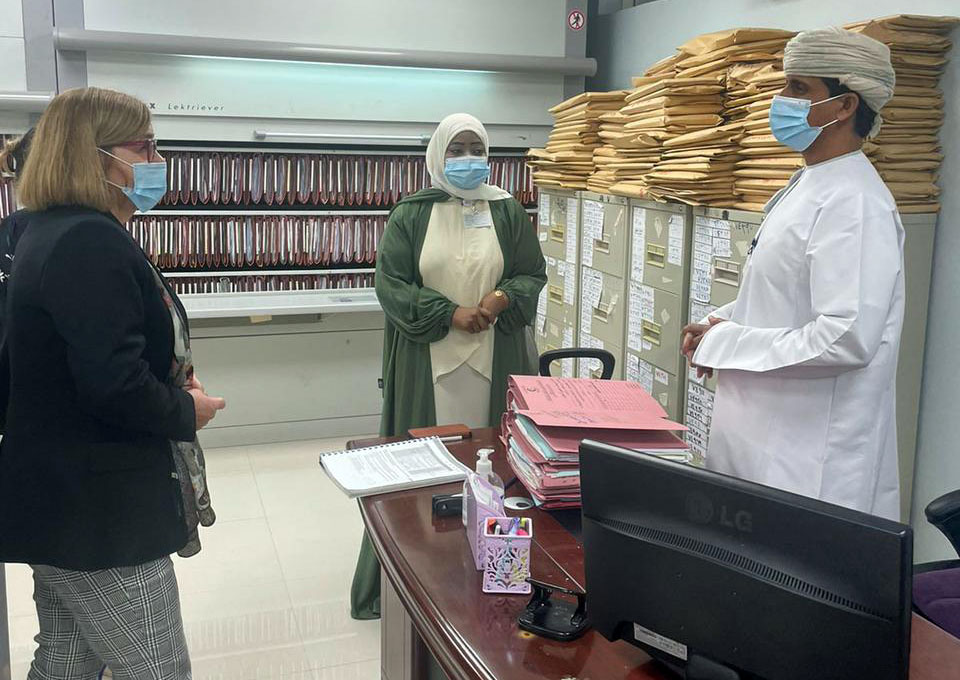
Introduction: Integrating NCDs into primary care for enhanced data collection and tailored initiatives
The integration of noncommunicable diseases (NCDs) into primary care in Oman has proven to be a valuable approach for data collection and surveillance of selected NCDs. This initiative, led by the Ministry of Health, has enabled the assessment of healthcare performance and the gathering of patient data. As a result, it has facilitated focused decision-making and the implementation of tailored initiatives to address local needs, such as the establishment of obesity clinics, awareness campaigns and the introduction of new medications.
Context: Primary care as the foundation
The Ministry of Health in Oman serves as the main healthcare provider, with primary health care centers constituting a vital component of the three-tiered health system. The primary care system consists of 243 facilities. The Oman national STEPS Survey conducted in 2017 revealed a growing burden of NCDs and their risk factors compared to previous years. The prevalence of raised blood sugar reached 15.7% of the population, raised blood pressure affected 33.6% of the population, and approximately one-third of the population was obese. This alarming trend shifted the focus towards strengthening primary health care as the initial point of contact for most patients seeking healthcare services. Primary health care services were reinforced and equipped to effectively prevent, screen and manage NCDs.
Monitoring NCDs at the primary care level: Enhancing surveillance
Integrating NCDs into primary care necessitated the development of mechanisms to monitor chronic disease clinics. Standard disease registers were created for diabetes, hypertension, asthma and the national screening programme. These registers were distributed to all primary healthcare facilities, allowing for the collection of vital information such as the number of patients attending the clinics, their demographic characteristics (age and gender), and the presence of any co-morbidities. When diagnosed, patients are registered in these clinics and provided with booklets to bring to each appointment, ensuring accurate follow-up and record-keeping of medications. The Ministry’s annual health report records the number of new patients registered in these clinics. These disease registers enable the assessment of disease burden in primary care, monitoring of disease control levels, evaluation of primary care services, and tracking of the total number of individuals screened through the national screening programme. These registers also inform targeted interventions, including community awareness campaigns, designed to address the specific needs of each healthcare facility.
Presently, disease registers are manually maintained however, efforts are underway to transition to electronic disease registers in primary care. Additionally, the use of civil ID numbers across all facilities ensures the avoidance of patient registration duplication in multiple primary care facilities.
Challenges and lessons learnt: Expanding data sharing
While the existing surveillance system effectively monitors clinics within primary care facilities under the Ministry of Health, there is a need to address patients who receive diagnoses and treatment from healthcare providers outside the Ministry, including the private sector. Establishing a system that allows the private sector, including private hospitals, to share patient data and contribute to the surveillance system is essential. Moreover, the burden of manual data collection places a strain on primary care teams and may result in inaccuracies. Work is underway to convert these processes into electronic disease registers, ensuring greater precision and efficiency.
Impact: Driving performance and innovation
The current surveillance system, utilizing indicators in disease registries, has had a profound impact on assessing the performance of each primary healthcare facility. It has fostered healthy competition among these clinics, encouraging continuous improvement while maintaining service quality. Notable achievements and programs that have originated from the primary care surveillance system include:
The assessment of asthma clinics (initiated in 2014) at primary healthcare facilities, demonstrating a reduction in the proportion of patients reporting a history of hospitalization within the last 12 months, from 7.9% to 3.1%.
The introduction of new medications at the primary healthcare level in select healthcare facilities to better control diseases.
The establishment of well-being and obesity clinics at various primary healthcare centers.
Next steps: National NCD framework development
The NCD Department at the Ministry of Health in Oman is presently focused on developing the national NCD framework of indicators, which will incorporate indicators for primary healthcare facilities. This framework will undergo piloting in a select number of primary healthcare facilities before being implemented across all facilities, ensuring comprehensive coverage and consistency in monitoring and addressing NCDs.
Story originated in 2019.




